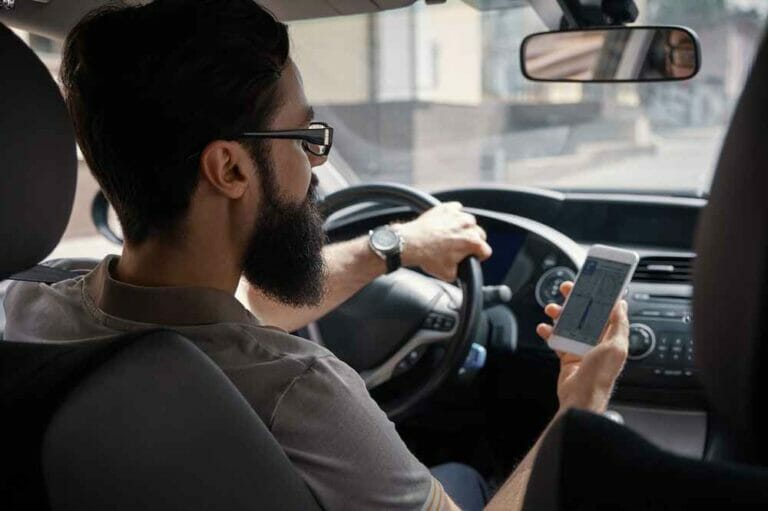Every year, car manufacturers release new models with advanced features. Ideally, these features help drivers accomplish something more safely. However, some features lead to distracted driving cases.
There’s a good deal of debate over whether certain features are safe or necessary, and this conversation is not new. In the 1980s, the Army commissioned a study to determine how well Apache helicopter pilots handled an increasing amount of information on digital displays in the cockpit.
As new research shows with newer models, those conducting the study found that too much information on the display caused cognitive overload and reduced performance. Unfortunately, all this can lead to car accidents.
So, do all these new gadgets lead to more distracted driving?
What Is Distracted Driving?
Distracted driving is when someone operates a motor vehicle while:
- Having their eyes off the road due to visual distractions
- Not having both hands on the wheel due to manual distractions
- A lack of focus on defensive driving due to cognitive distractions
Here are some of the most common distractions.
- Eating
- Drinking
- Talking to passengers
- Checking on children or pets in the backseat
- Adjusting controls on the vehicle
- Texting
Texting and driving are one of the main concerns because it draws vision away from the road, takes a hand off the wheel, and keeps the focus off of safe driving. According to a study, reading or replying to a text requires driving about the length of a football field.
David Strayer, one of the researchers in the Army study, said that everything they learned about pilots becoming overloaded with information can apply to drivers. However, manufactures of cars and mobile devices continue to ignore the research.
In some instances, newer models have full touch screen displays with even more distractions, removing the tactile advantages of manual controls that someone can operate without looking.
How Advanced Tech Leads to Distracted Drivers
Still wondering how advanced technology can lead to driver distraction? Let’s take a look at some new features.
Connected Apps
Modern drivers want to control and monitor their vehicles with their phones. Several apps display maintenance features, allow drivers to lock or unlock doors, or show where the nearest gas station is. It sounds great, right?
All of this is helpful information. However, it delivers the information to their smartphone, which draws their attention away from the road. That leads to the same trifecta of distractions as texting.
Emergency Services & Stolen Vehicle Info
Services like Onstar provide drivers with software to assist with locating a stolen vehicle or aiding a driver in need of emergency services. Moreover, it allows for hands-free calls, which is a safer alternative to using your phone.
However, this year the company sunsetted hands-free calling because they felt they couldn’t provide the best service. Instead, they recommend customers use Bluetooth pairing.
Rear View Video
Rear-view videos allow drivers of large vehicles to see the traffic behind them. With a camera at the rear of the vehicle, the driver can toggle between views and watch for hazards. However, the issue lies with the toggling and watching.
Can the driver simultaneously keep track of what’s ahead while having to watch the video? Or, does this lead to another form of distracted driving?
Driver Assistance Systems
Often, advanced driver assistance systems come with an array of safety features. These systems alert drivers to vehicles in their blind spots, vehicles crossing as they back up, risks of collisions, and more.
The issue with these systems is the broad selection of bells and whistles that clutter the displays. There’s a great deal of information available, drawing the driver’s vision and attention away from the task at hand.
Moreover, drivers can become overly dependent on these alerts, developing a false sense of security and paying less attention to the road.
Distracted Driving, Features, and Your Safety on the Road
For a report, the Los Angeles Times contacted some of the top car makers in the United States, including Honda, Toyota, and Ford. Additionally, they reached out to Apple and Samsung. The reporters wanted to know how these manufacturers tackle distracted driving.
Their solution? So far, their goal is to integrate smartphone technology into vehicle systems and increase the number of alerts, displays, and interfaces. Somehow, they expect this to make driving safer.
Unfortunately, that means drivers must keep their focus where it belongs.
Were you injured in a car accident caused by distracted driving? Contact a personal injury attorney to learn more about your options. You may have the right to pursue compensation for the financial, physical, and psychological impact of your injuries.

